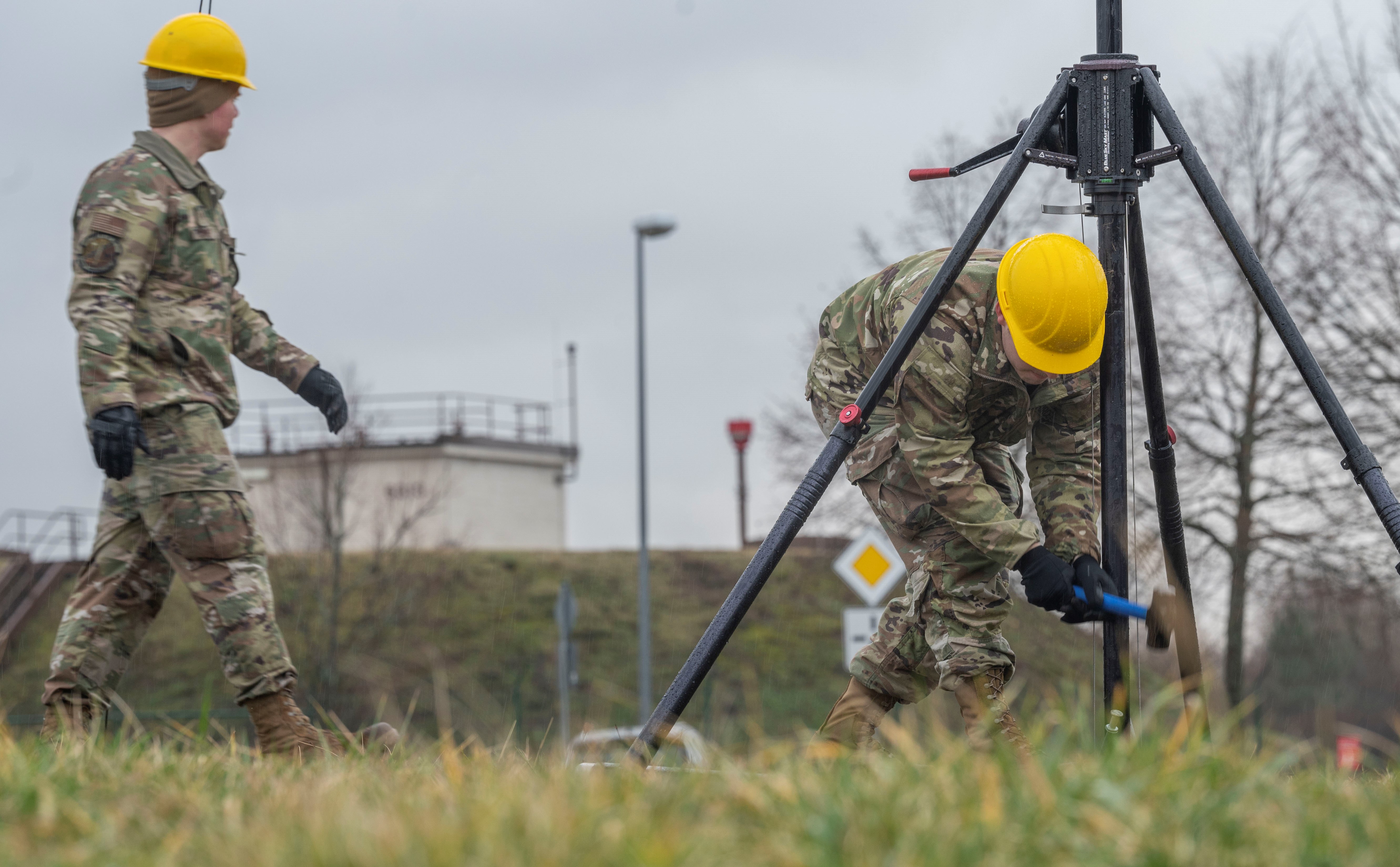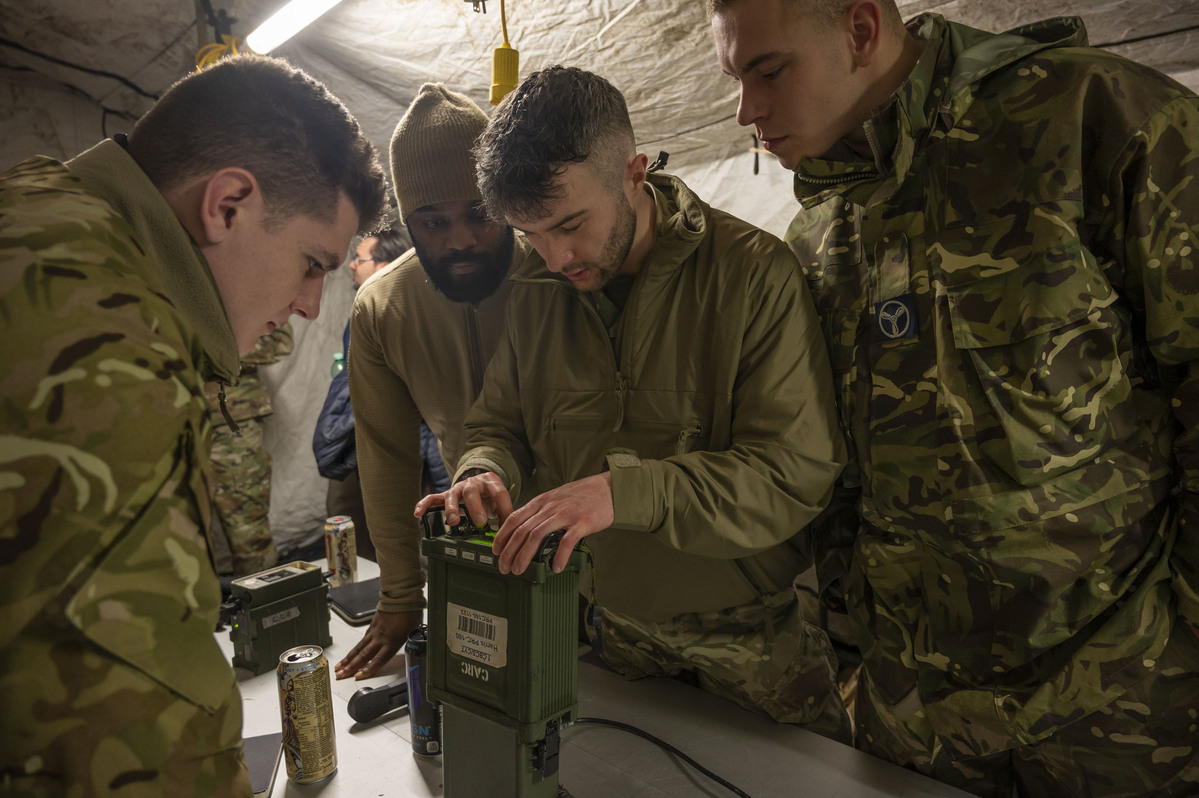British Royal Air Force Tactical Communicators have recently teamed up with their counterparts from the US Air Force in Germany to sharpen their expertise in high-frequency communications.
The culmination of their training saw a joint UK/US team successfully establishing a high-frequency link with Guam, spanning over 11,500 kilometers across the vast expanse of the Western Pacific.
The Royal Air Force said that Cyberspace Communications Specialists stationed at the Tactical Communications Wing within the 90 Signals Unit at RAF Leeming participated in an Advanced HF Communications Course held at Ramstein Air Base in Germany.
The course, facilitated by the USAF’s 1st Combat Communications Squadron (1 CBCS), involved an exchange of expertise, skills, and familiarity with equipment utilized by both units.
The service added, “On the final day of training, led by HF experts from the 1 CBCS, the UK and US signallers collaborated to establish a communications link with 644 CBCS 11500 km away in Guam.”

Wing Commander Maisey, Officer Commanding of the RAF’s Tactical Communications Wing, said, “It is essential that we stand shoulder-to-shoulder with our allies in NATO as the alliance turns 75. This opportunity to train with our US partners allows us to leverage our combined strengths, enhancing our shared tactics and strong relationships while honing technical skills in HF.”
Maisey added, “This is only one small element of our work delivering on the Combined Vision Statement for Agile Combat Employment.”
This collaboration follows the signing of a Combined Vision Statement on Agile Combat Employment by the RAF and USAF in September 2023. The vision statement aims to revolutionize strategic approaches to aircraft deployment and ancillary functions, emphasizing the shift from unique systems to interoperable ones.
The objective is to enable seamless collaboration between the two air forces, with systems that can operate cohesively and, when necessary, be managed by personnel from either air force.
This strategic initiative underscores the commitment of both forces to enhancing joint capabilities and adaptability in the ever-evolving landscape of modern military operations.
Agile Combat Employment To Enhance Military Readiness
The Royal Air Force pointed out that High Frequency (HF) communications are a cornerstone element of Agile Combat Employment (ACE), a strategic concept aimed at enhancing military readiness and resilience in the face of evolving threats.
ACE is focused on swiftly dispersing air assets across various challenging and geographically distant locations, reducing susceptibility to enemy attacks, and maintaining operational effectiveness with limited external assistance.
While HF technology is not new, its fusion with modern advancements represents a transformative leap in global communication capabilities.
By harnessing HF frequencies, military forces can establish reliable and secure communication networks that span vast distances without relying on traditional satellite infrastructure or vulnerable subterranean data cables.
This capability enhances operational flexibility and strengthens resilience against potential disruptions to conventional communication channels, thereby bolstering overall military effectiveness in a dynamic and contested operational environment.

The recent joint drill, which centered on establishing a high-frequency link with Guam spanning over 11,500 kilometers across the expansive Western Pacific, highlights the cooperative endeavors of UK and US forces to improve coordination and support for military operations in the Indo-Pacific region.
Guam serves as a significant forward operating base for various military branches, providing logistical support, facilities, and infrastructure for deployed forces.
Thus, in the event of a crisis or conflict in the Indo-Pacific region involving China, having a long-distance communication link will enable a swift response and deployment of military assets, thereby strengthening readiness and deterrence capabilities.
Strategically, there is a concern that an adversary like China could disrupt SATCOM communication, a scenario known as C2D2E (Command and Control in a Denied or Degraded Environment).
The growing consideration of space militarization and demonstrated capabilities to destroy SATCOM and GPS infrastructure underscore the significance of addressing C2D2E, especially in the context of potential symmetric warfare.
In this landscape, HF communication stands out as the sole practical beyond-line-of-sight (BLOS) alternative. To optimize the effectiveness of HF Radio as a fallback to SATCOM, it is crucial to incorporate modern developments and applications in HF technology.
Additionally, training in a C2D2E environment is essential to ensure preparedness and operational proficiency in situations where SATCOM communication may be compromised.
- Contact the author at ashishmichel(at)gmail.com
- Follow EurAsian Times on Google News




